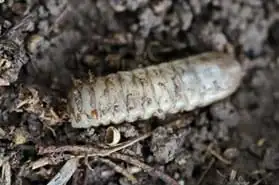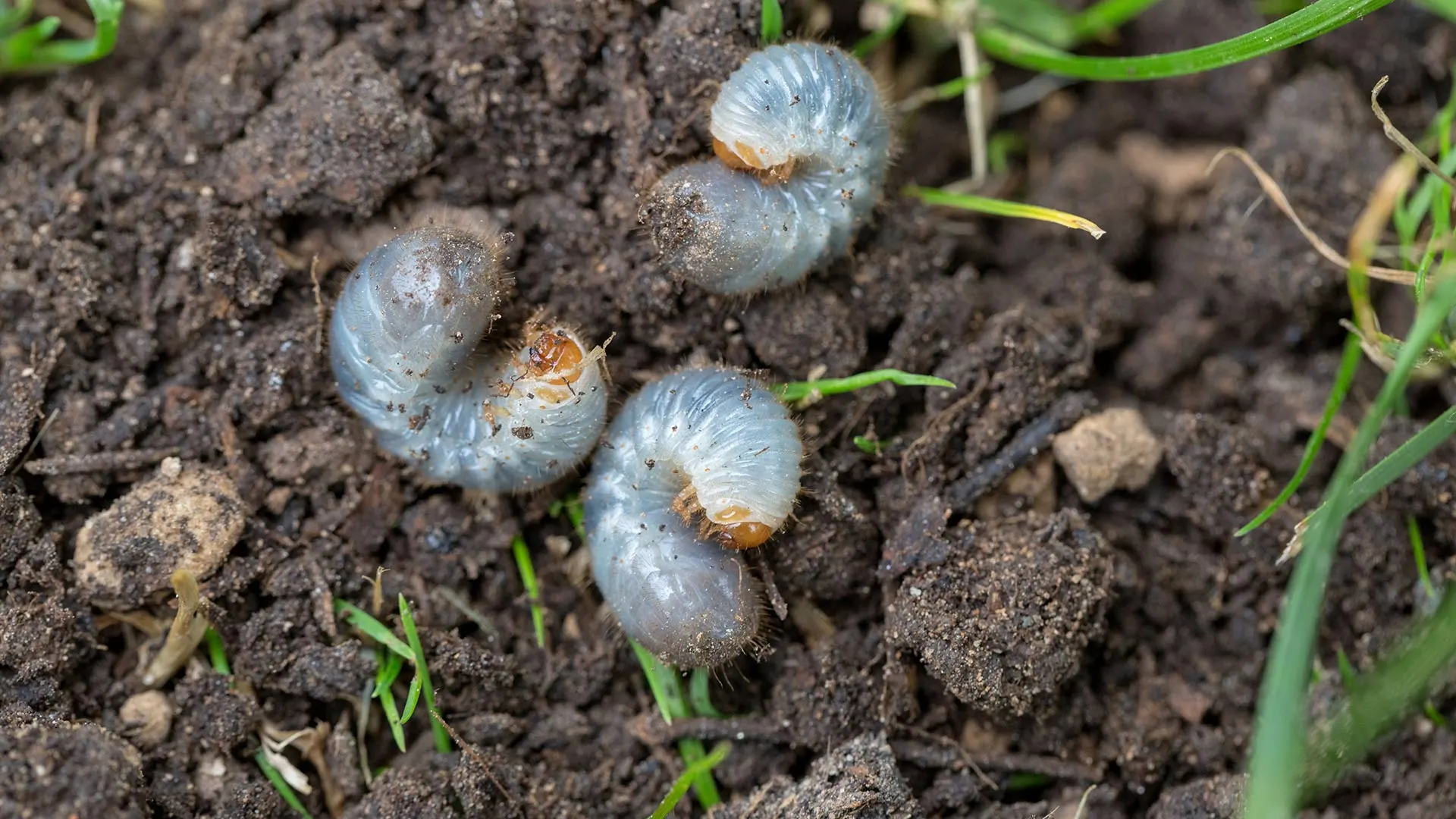Did you know a June bug’s larvae thrives on the roots of turf grass? Late summer and early fall are when a June bug’s larvae, known as ‘grubs’, will feast on your lawn eating the root system. A healthy lawn can survive a few grubs per square foot, but if you find multitudes of grubs below the surface, this can lead to problems.

To stop the life cycle of lawn-damaging grub worms, it’s important to have a long-term solution to kill existing grubs and prevent eggs.
If your lawn has patches of discolored grass, check the damaged area’s root strength by pulling on the grass. If the roots are damaged, the grass will pull-up with minimal tension. In the same area, dig about 2” below the surface to look for a grub infestation.
Grub Treatment
In the fall, it’s already too late to prevent grubs. Instead, choose the appropriate curative product to kill existing grubs and prevent further damage. In spring, prepare to use an insecticide to eradicate grubs as they begin to feed on the roots. Always water the grass at least 1? after the application of any product so it can reach the root system and beyond.
Be patient. The process of preventing and eradicating the life-cycle of grubs requires diligent application at the appropriate times of the year.
Applying professional grade products through the seasons is the best line of defense against grubs. We offer a treatment program to address grub worm damage in the fall and prevent new grubs in the spring and summer. Get a free quote and learn how our professional lawn care treatment service can keep these pests from damaging your lawn. Your north Texas grass will be greener and healthier when we regularly service your lawn.



Comments (0)
Thanks for your comment!
Thanks for your feedback! Your comments have been successfully submitted! Please note, all comments require admin approval prior to display.
Error submitting comment!
There is a problem with your comment, please see below and try again.